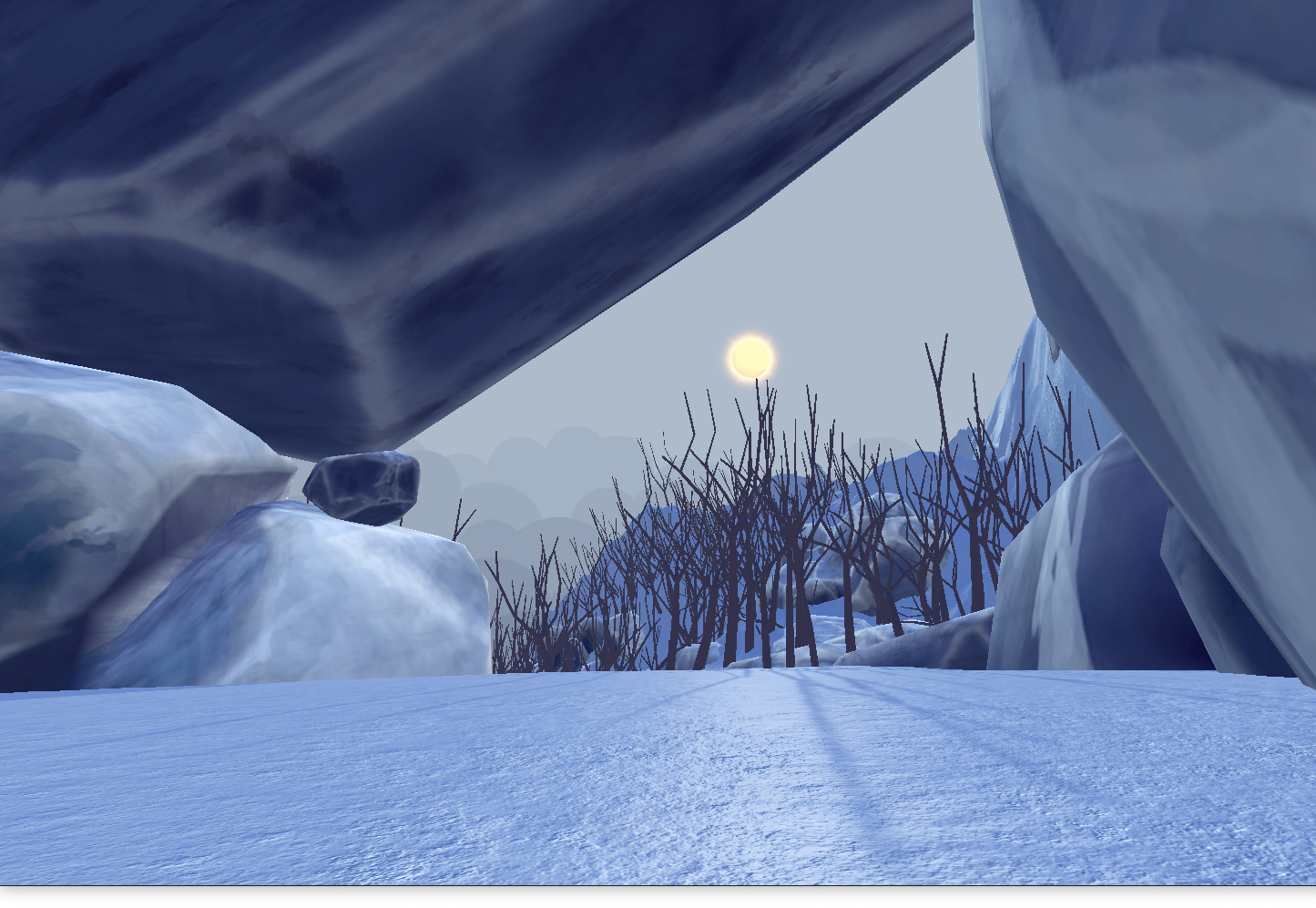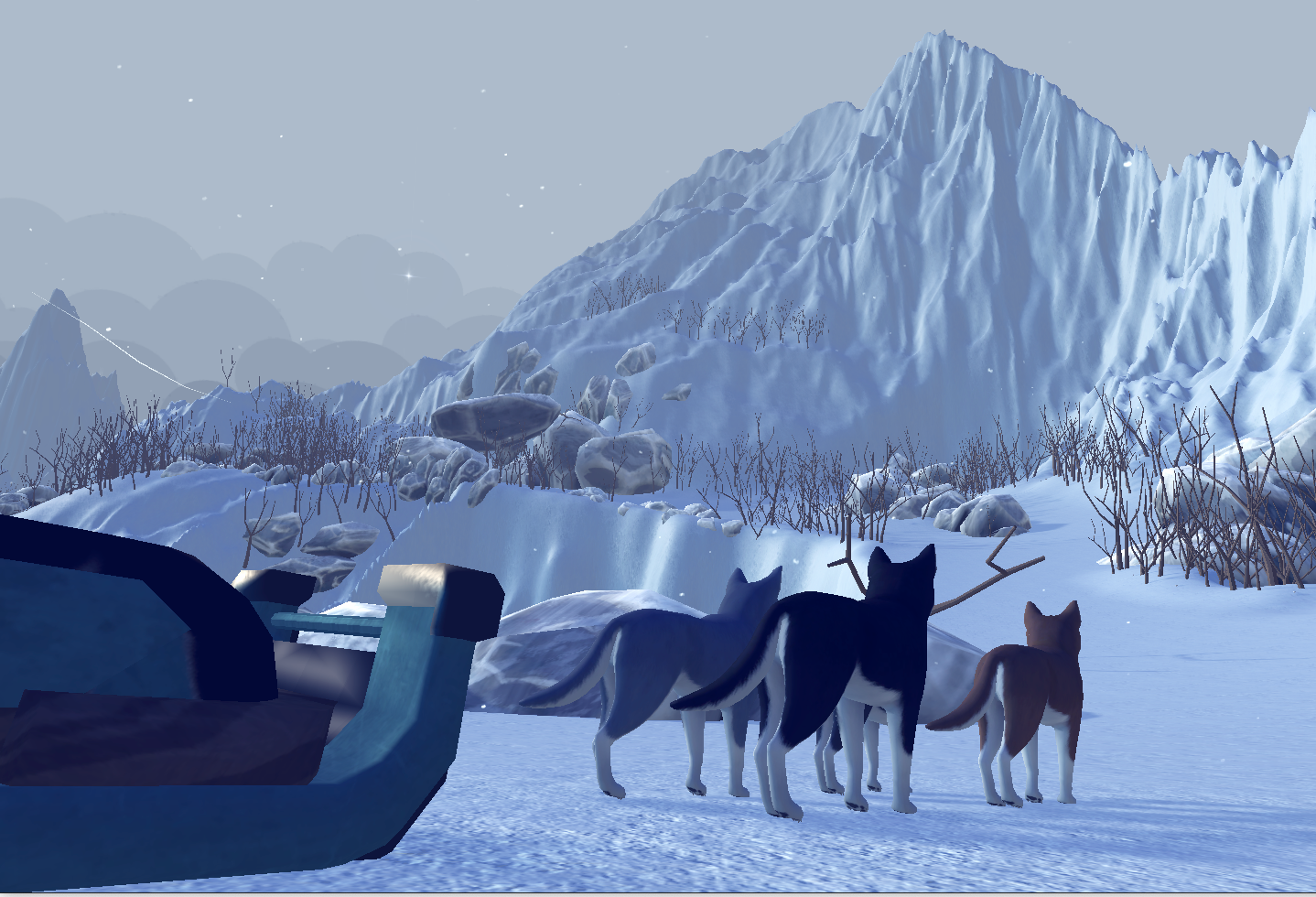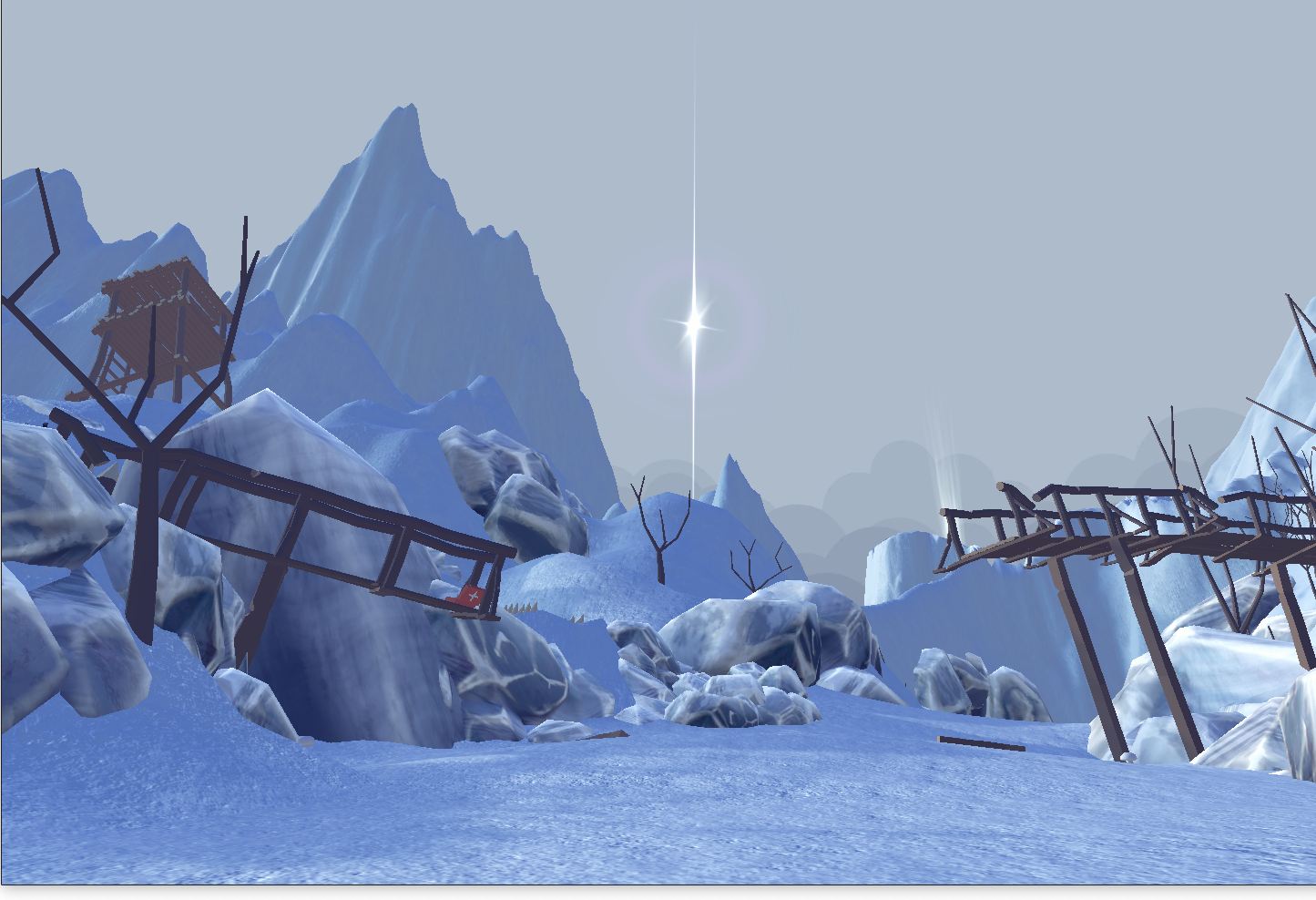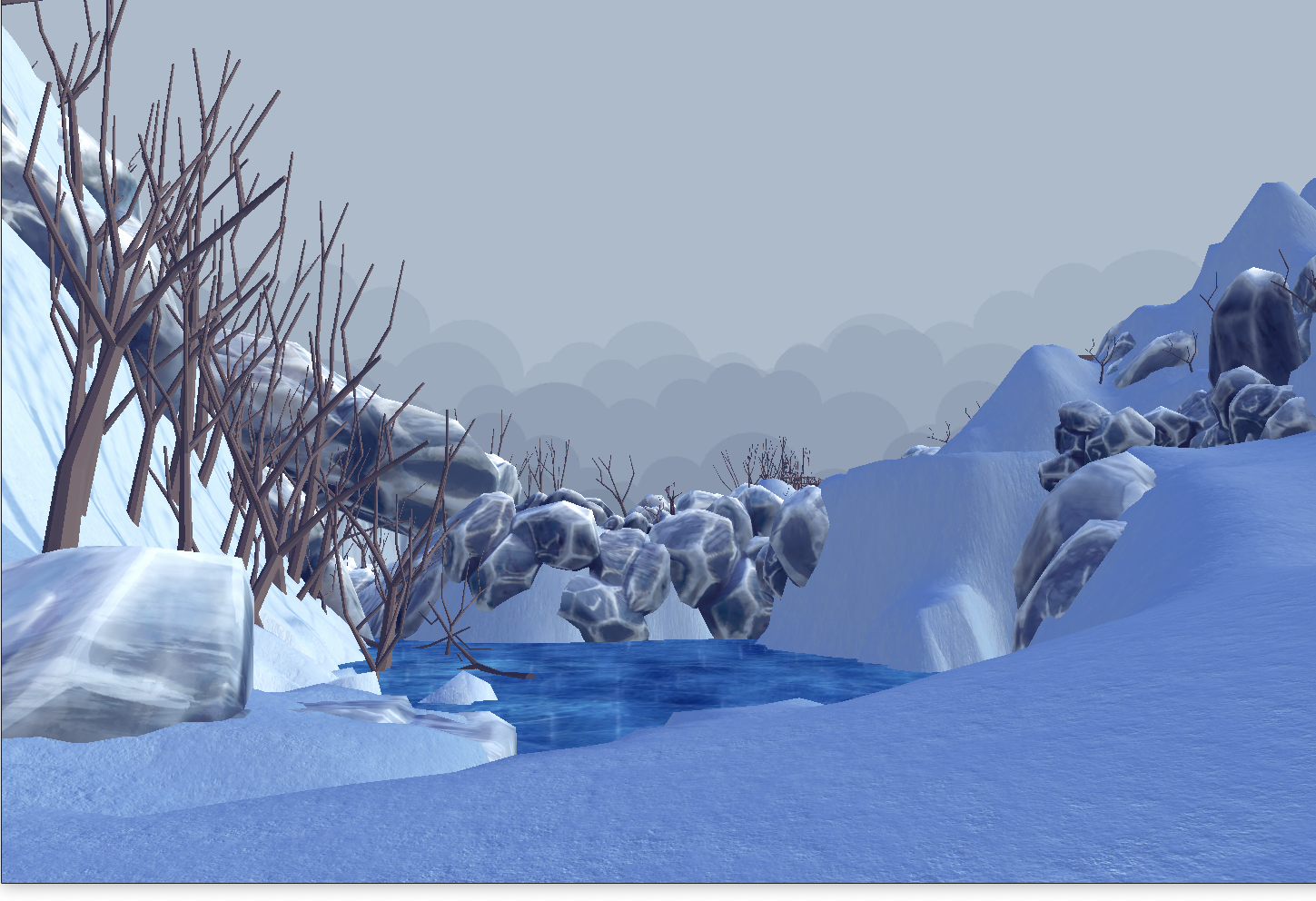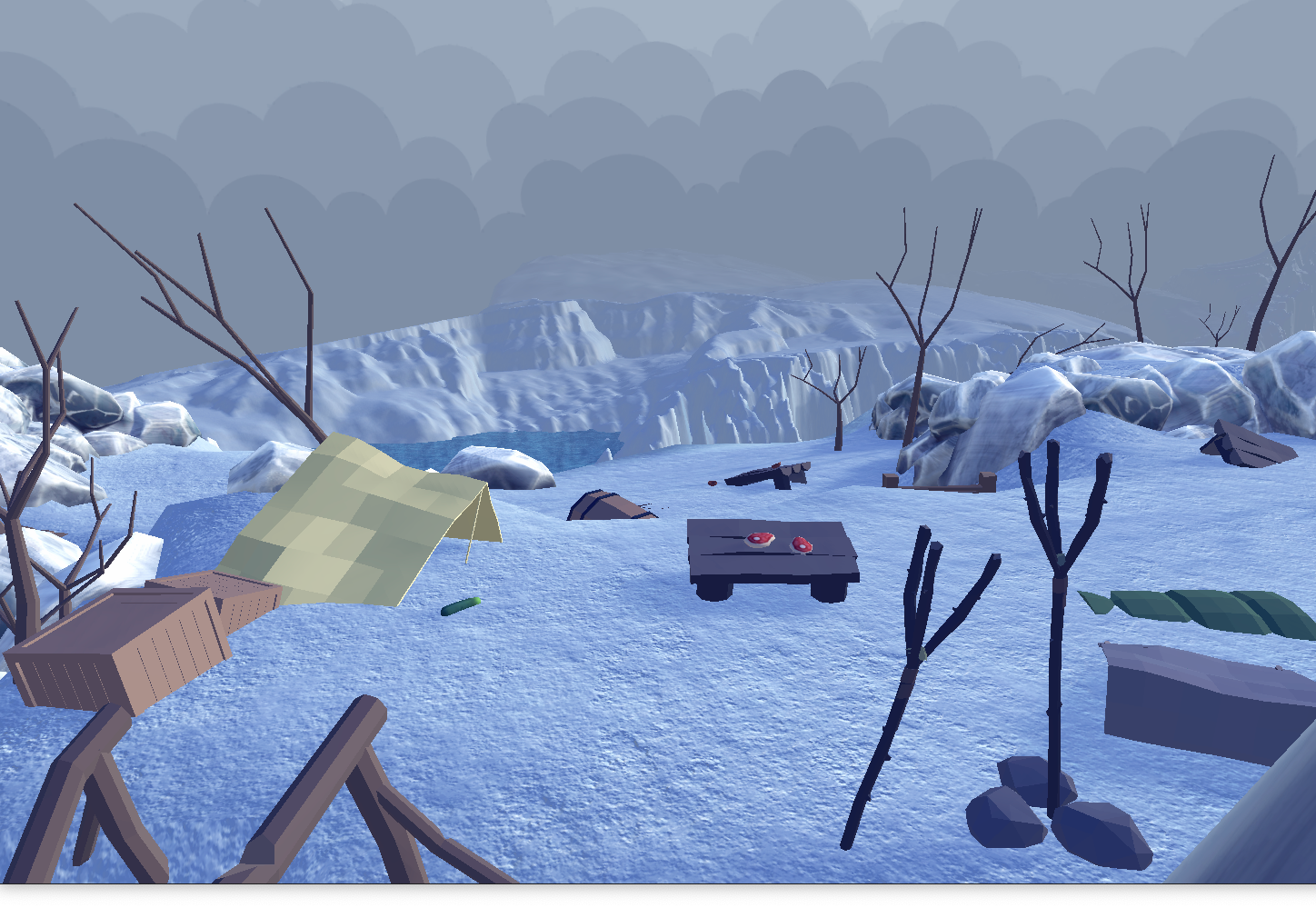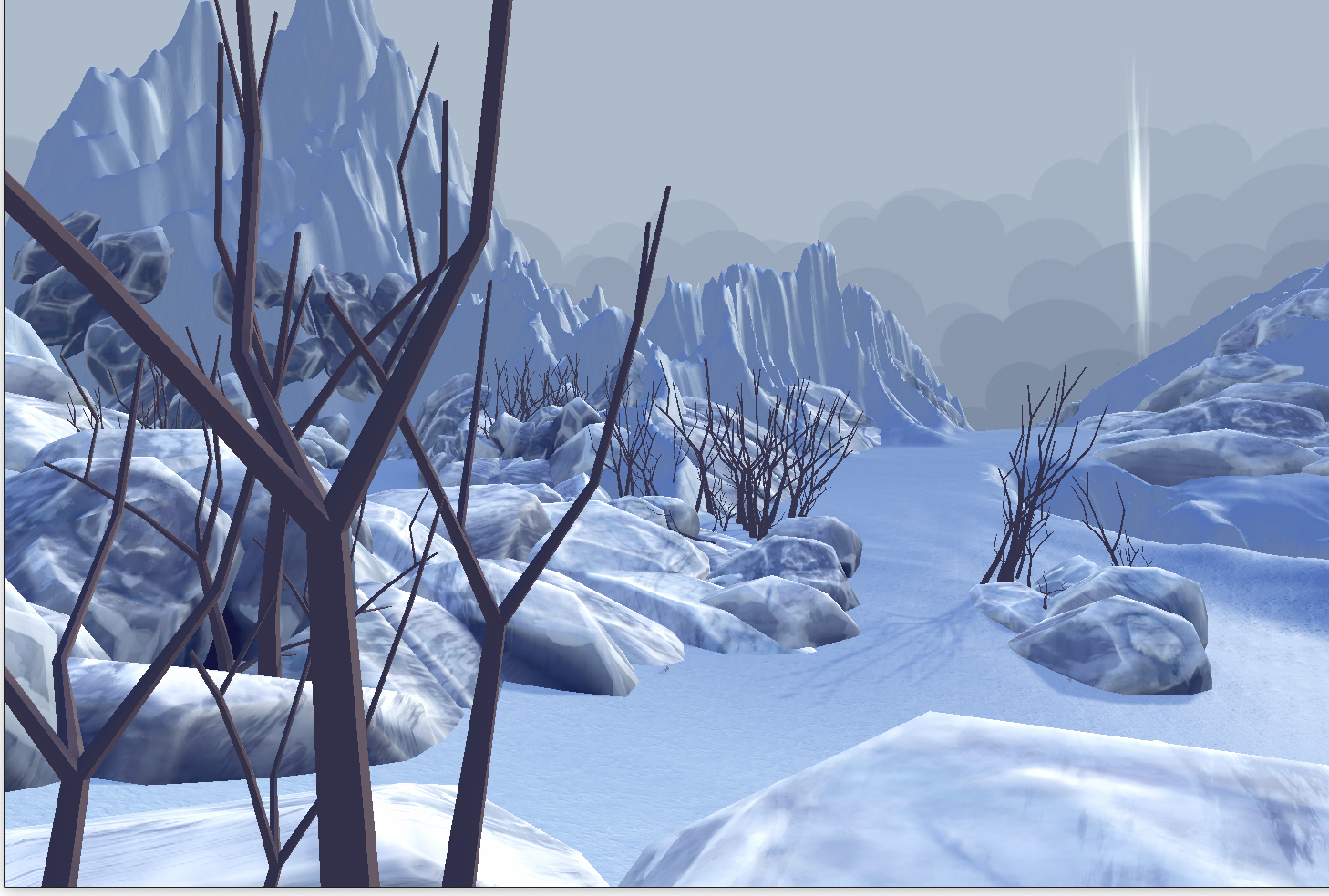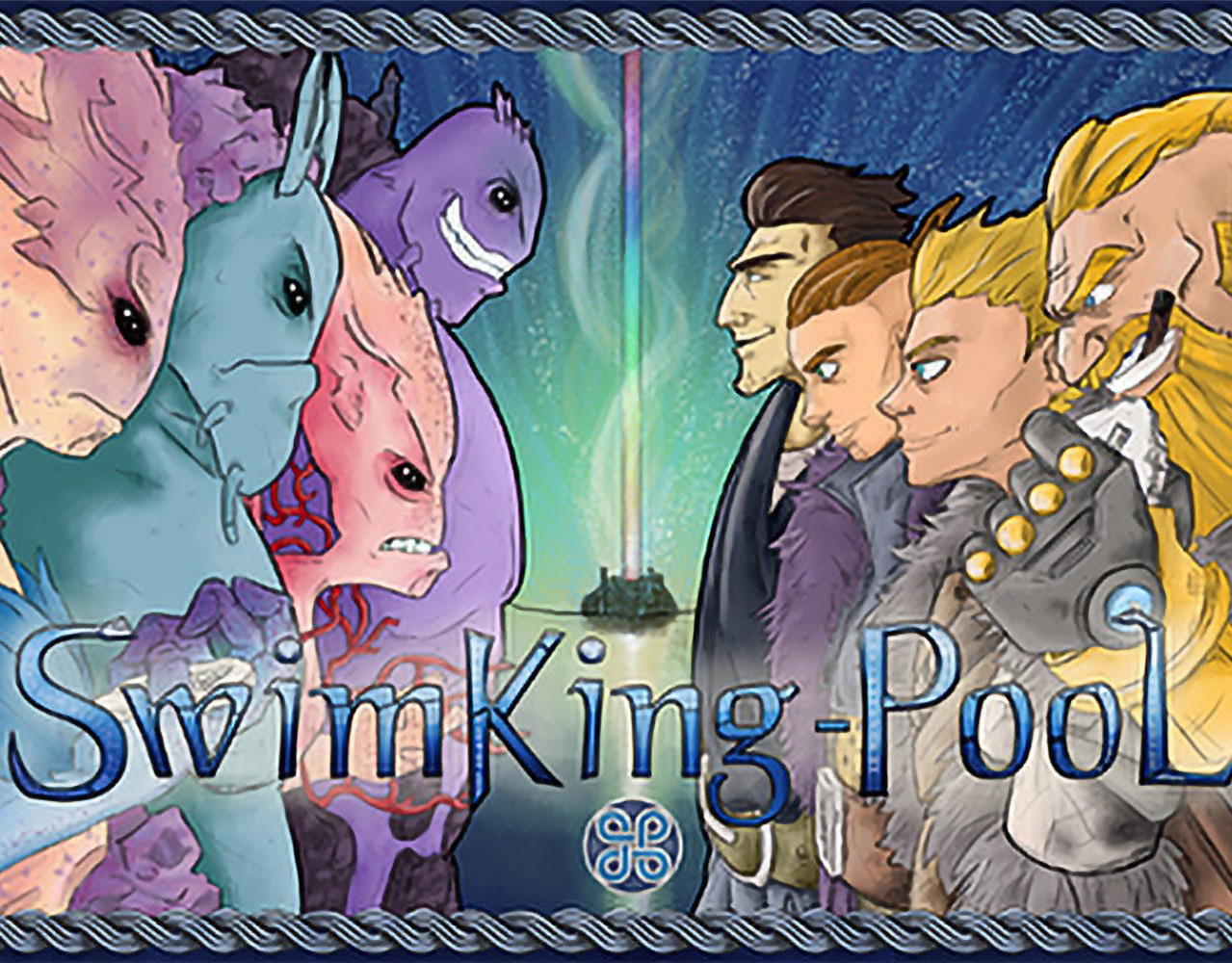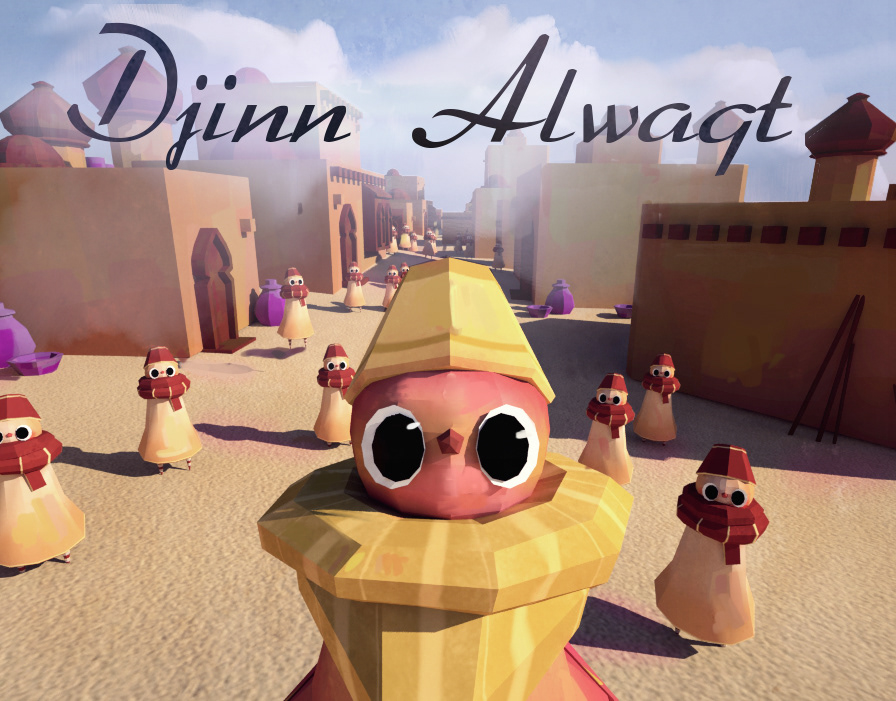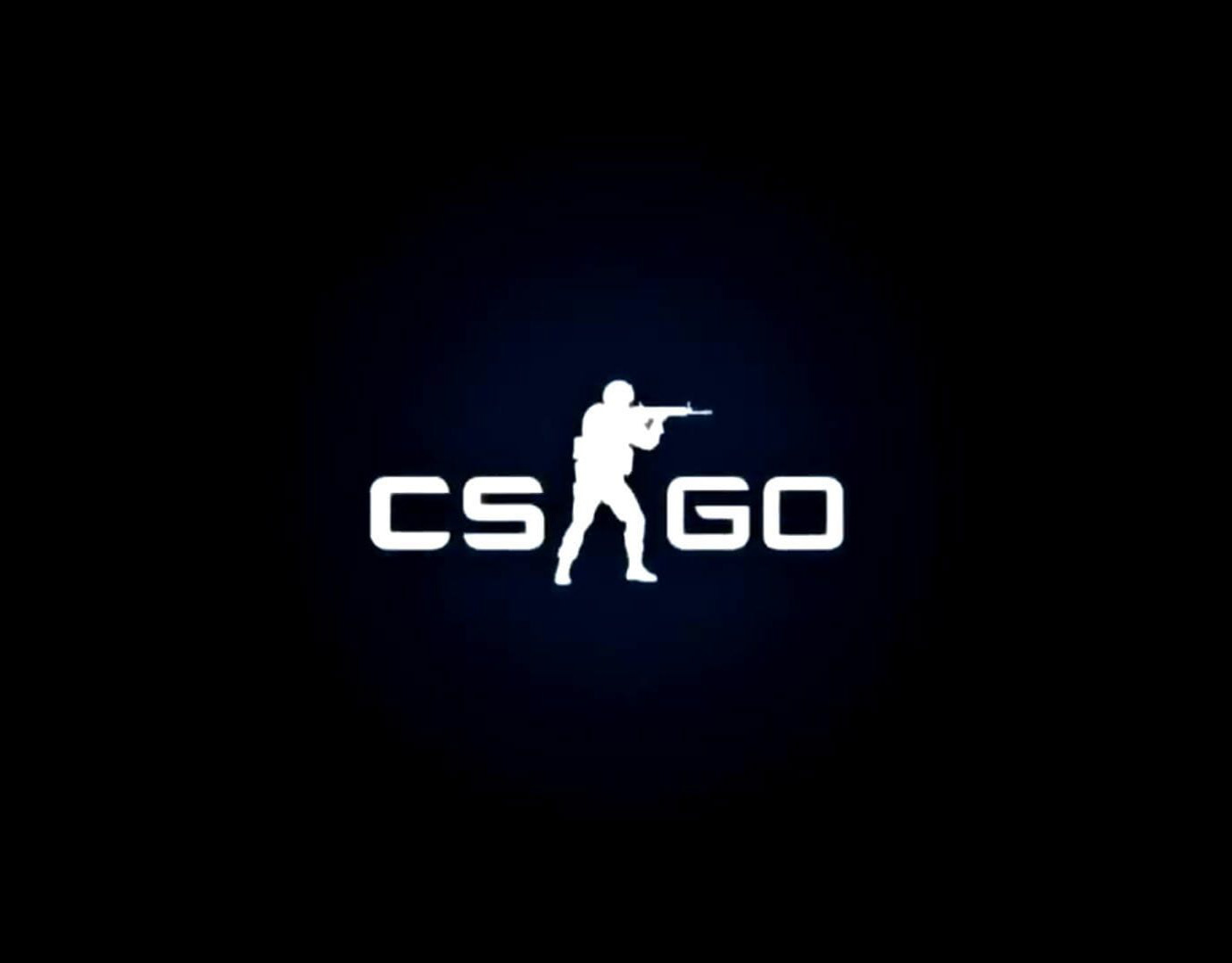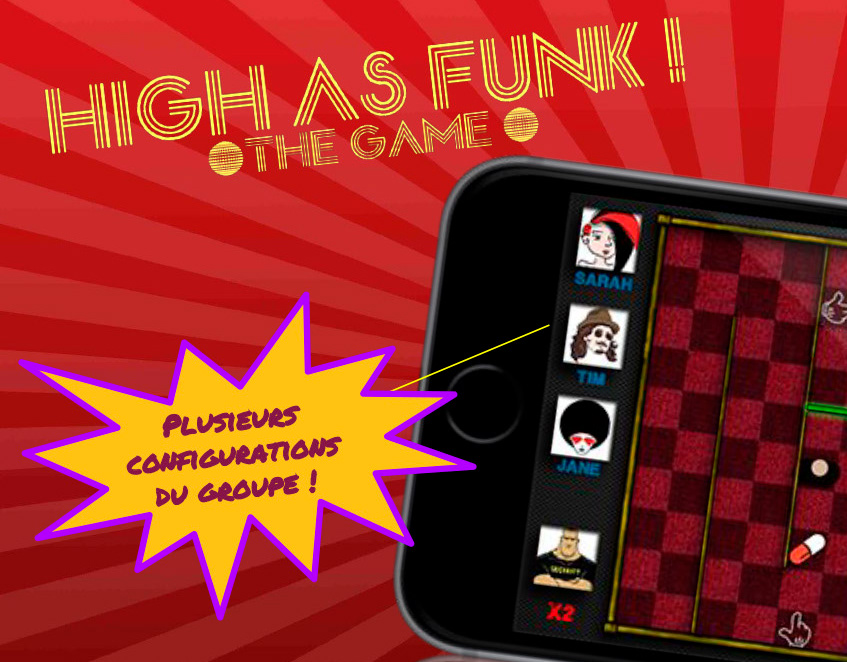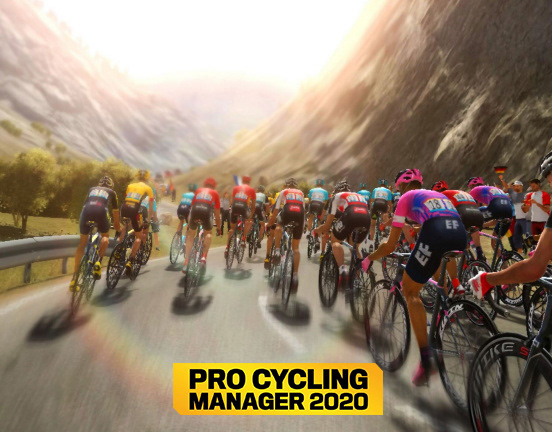ABOUT THE PROJECT
DESCRIPTION
1 Player Adventure-Survival Game
"Plan your exploration carefully as you roam the world, scavenge for resources to feed yourself and your dogs, drive through both hostile snowstorms and beautiful sunsets as you close the distance between you and salvation. Once your day of exploring is over, find a spot to settle camp for the night and use this relative security to feed and pet your canine companions, then sleep and live another day as a pilgrim to the Morning Star."
Controller required to play.
PERSONAL RESPONSIBILITIES
- Level Design
- Level Art, Lighting & Building
- Additional UI Design
- Additional Programming (C#)
- Additional Game Design
- QA Testing
---
WORLD DESIGN
Intentions
In Fall Of The Morning Star, the player have to reach the objective represented as the Morning Star while travelling through a rough, cold post-apocalyptic world.
The player can explore at will, but the incentive given by the game design is to always move towards the Morning Star, avoid the night by finding campfires and stop to loot ressources to feed their dogs, themselves.
The post-apocalyptic representation of the world is not obvious at the start of the game, but environmental clues and storytelling are here so the player ask themselves questions. The more the player progresses, the more evidences they can find about the world's demise.
Iterations
First iterations of the main game loop had the survival side of the game much more present. The goal of the original design was to drive the player thanks to pillars that they had to activate prior to the Morning Star, the final objective of the game.
The current and final iteration of the world is way more linear, with the Morning Star as the main objective and campfires as optional rest places for the player to stop by.
Design Challenges
The challenges as a level designer were mainly balancing the play time when travelling with the sledge, and as the player character doesn't sprint, have on foot exploration satisfying and rewarding while avoiding backtracking.
I had to work closely with the system designer to take in consideration the balancing of the day and night cycle as well as the consumables so the game can be challenging in the survival aspect while still being accessible.
As the players have to always go forward in the world to go to the Morning Star, they can't be lost. Even if a map is present within the player's journal, I wanted the players to feel like real explorers and guide themselves only with the Star and their environment. To do so I divided the world into biomes, using some elements very specifically, such as trees, caves, cliffs and mountains, that the player can identify and memorize at a glance.
Technical Challenges
During most of the production, we had some serious lighting issues with the terrain not being lit as the static meshes. I tried various attempts to fix this, communicating with the game artist, with changes in render pipeline, use of toon shaders... At first we used baked lights to render the whole world as best as it could be. As the building progressed, baking times were becoming unreasonably long. I finally find the issue to be coming from the vertices count of the terrain and the rendering pipeline taking the skybox not working as intended.
I had to drasticly reduce the terrain resolution, and as a result, remake all the terrain. The vertices count was lower to make it realtime lighting compatible, I didnt have to bake the lights anymore. Finally I used a flat color as input to draw the shadows rather than using the skybox.
---
POINTS OF INTEREST
In Fall Of The Morning Star, the player have multiple points of interest where they can stop by, explore on foot and loot some valuable items.
As we didn't have a lot of art manpower, we used a kit from the Unity asset store which allowed me to build various derelict and recently abandoned buildings.
Each point of interest is designed as a mini-level. I tasked myself to make a few house prefabs with different layouts that I used as bases to build all the explorable buildings and ruins of the game. Although I started with BSP brushes to prototype, this method helped me to build easily the interiors layouts I had on paper and test them as quick as possible in-engine.
---
SLEDGE MOVEMENT DESIGN
---
HUD DESIGN
---
